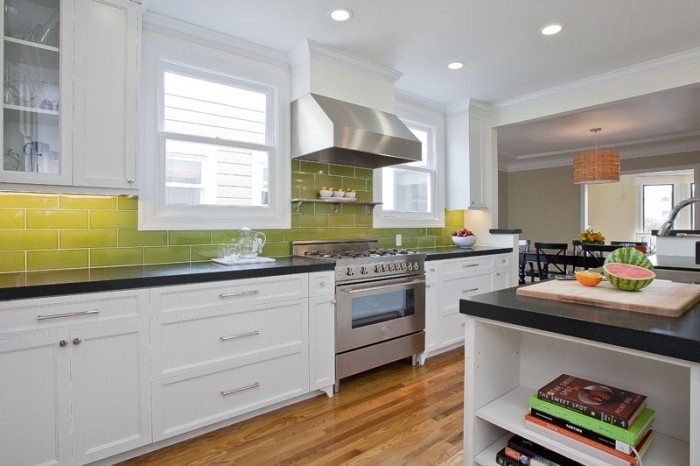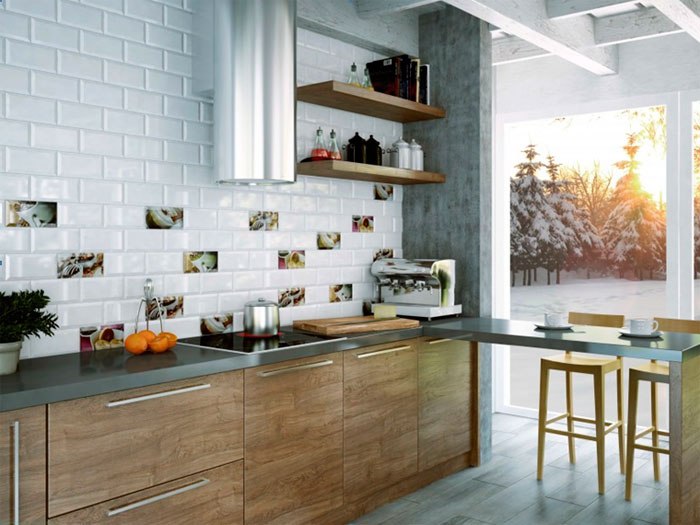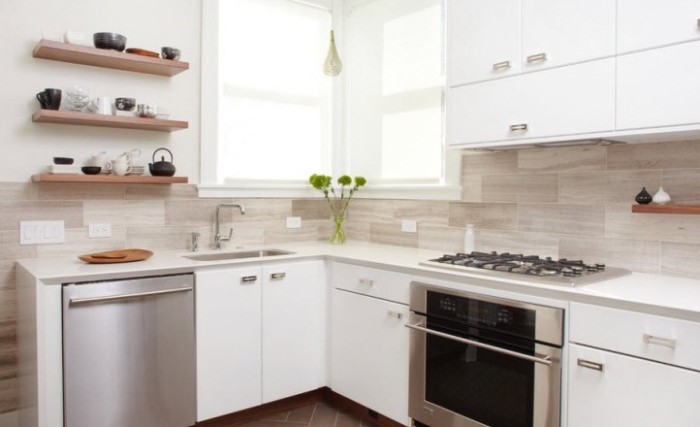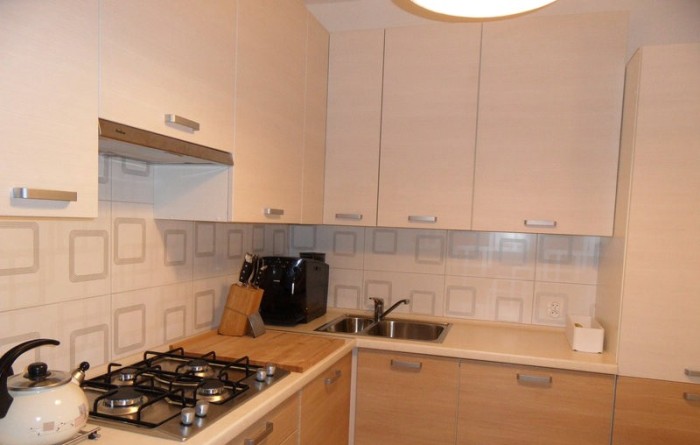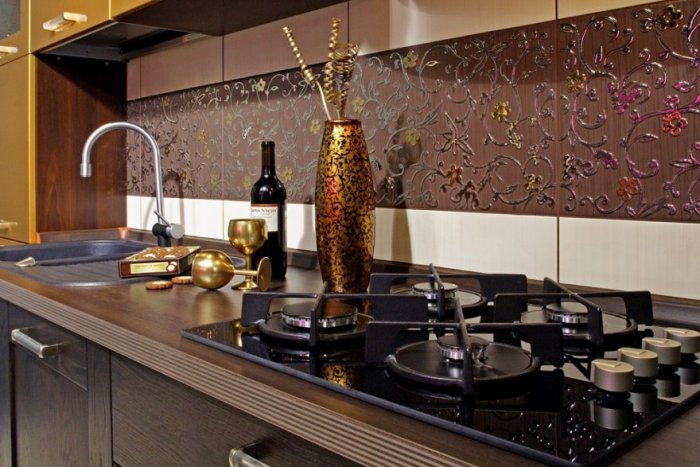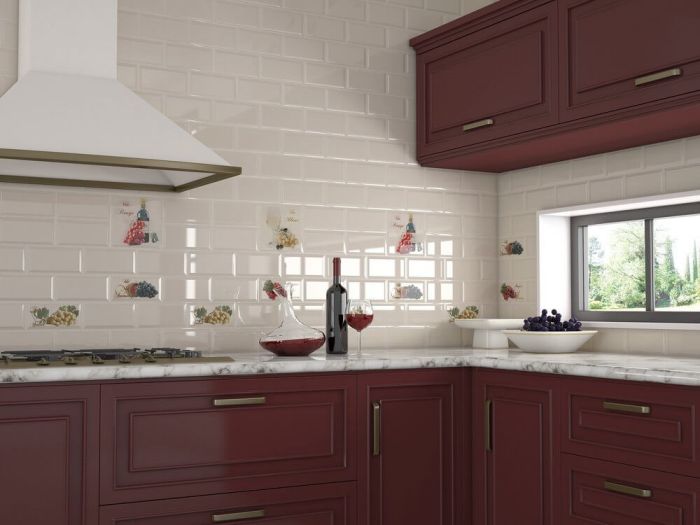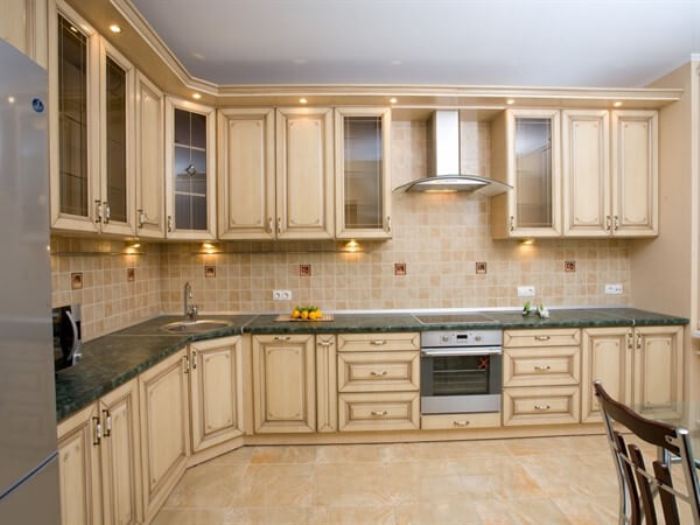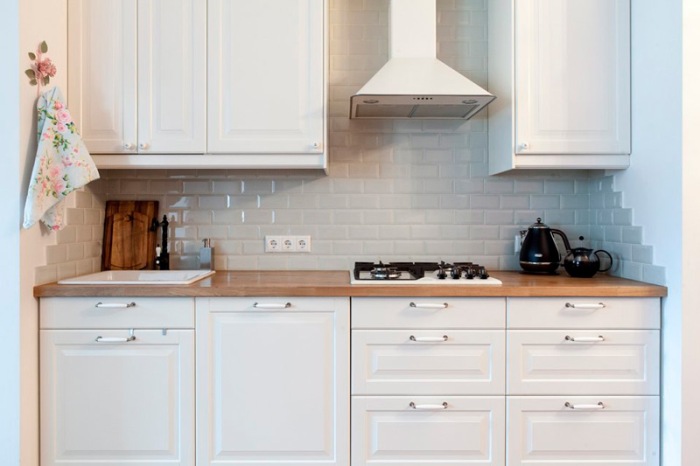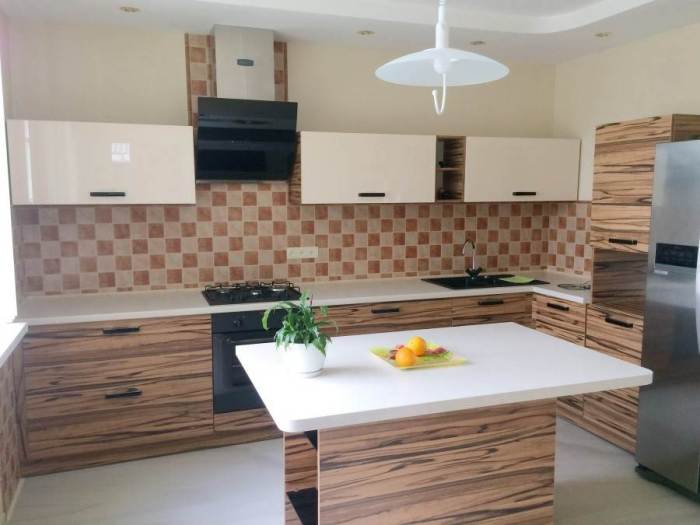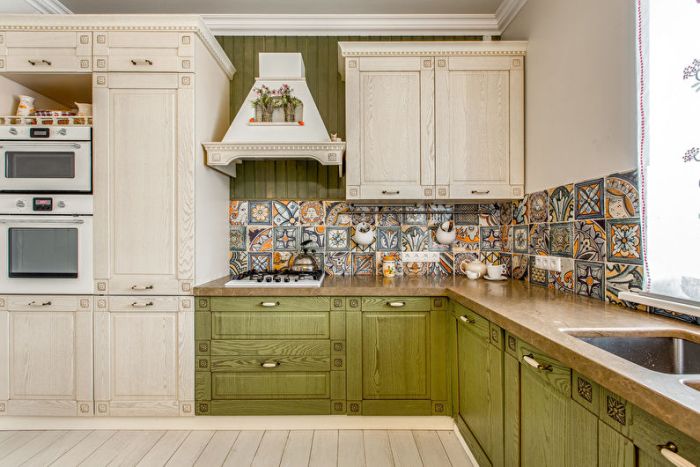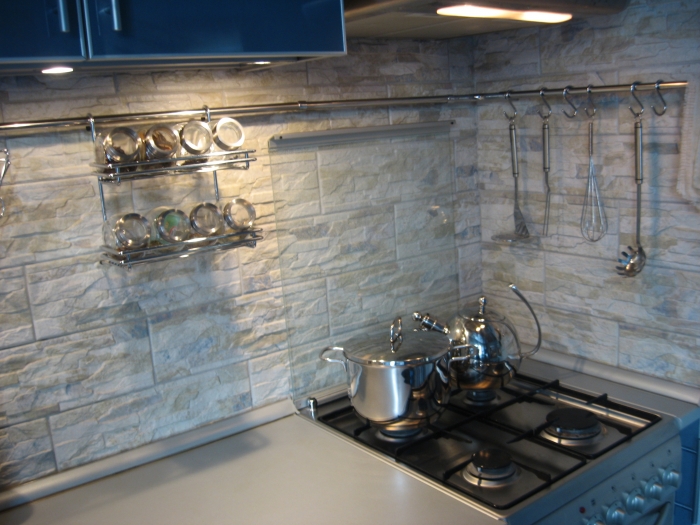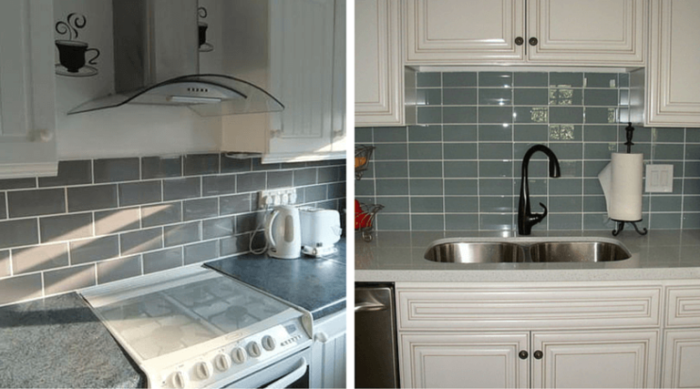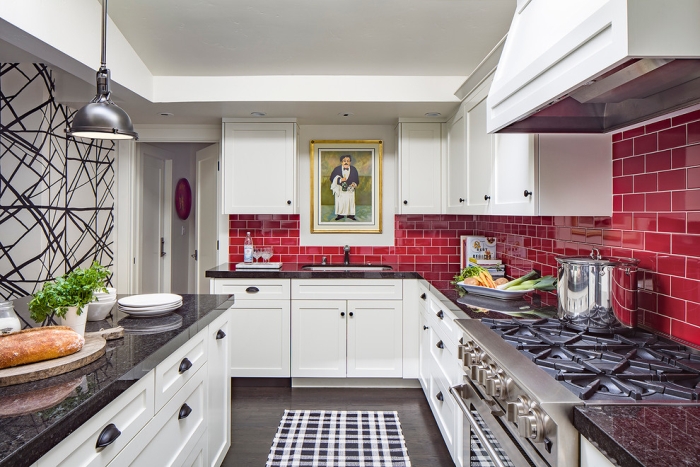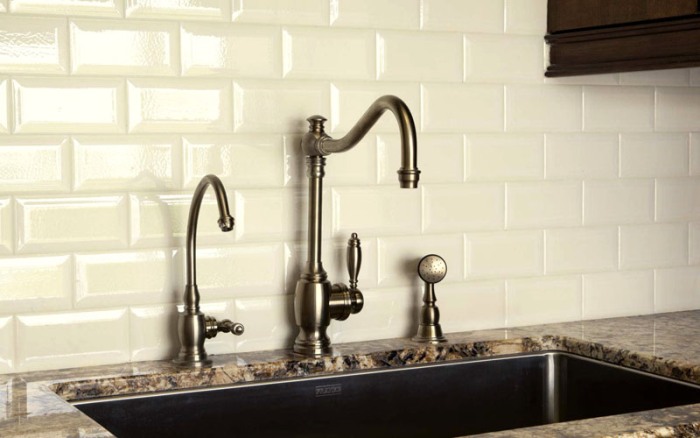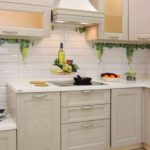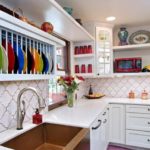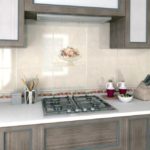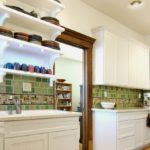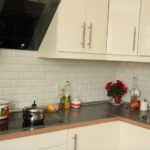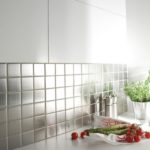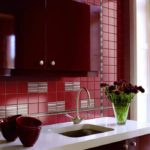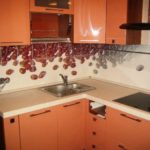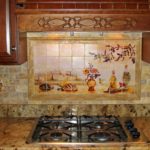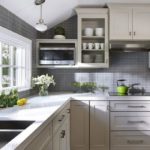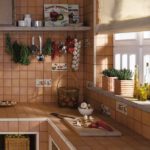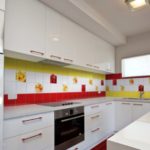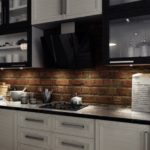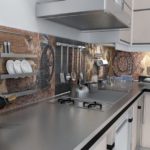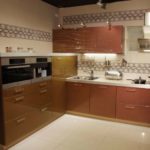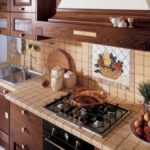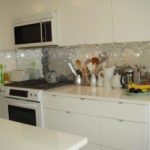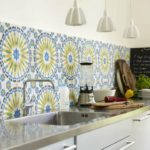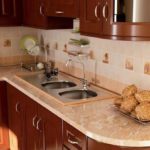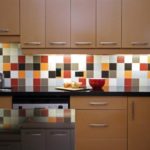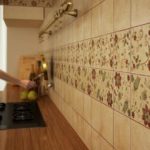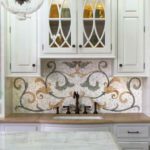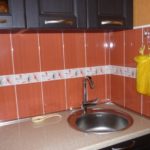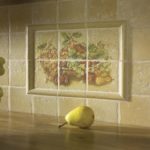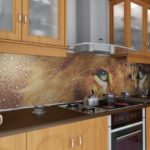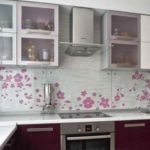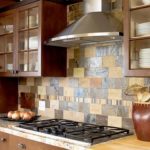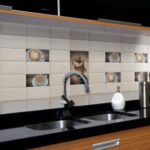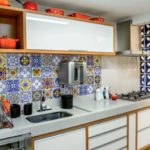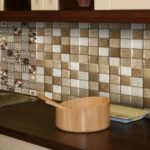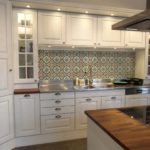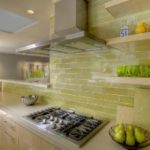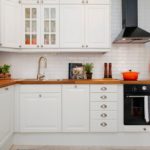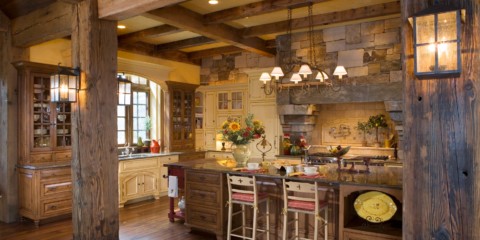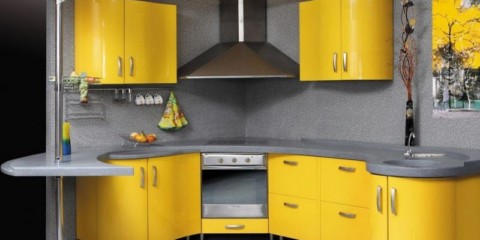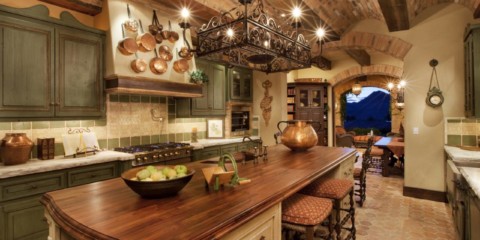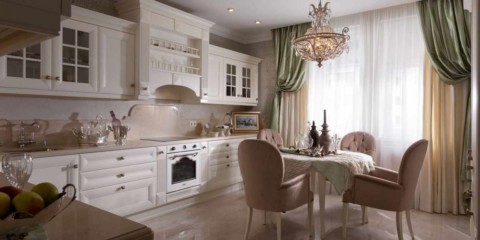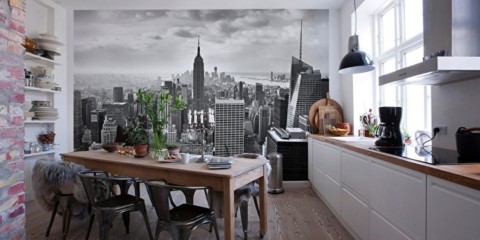 Kitchen
What could be the design of a white kitchen in the interior
Kitchen
What could be the design of a white kitchen in the interior
The kitchen apron in the kitchen plays one of the main protective and decorative functions. A variety of modern materials can help create a unique and original kitchen design. There are many options for finishing a kitchen apron - from decorative specific plasters to wood paneling and fiberglass. In this article, you can find tiled options for finishing a kitchen apron.
Apron design options: tiles in the kitchen
Content
The most common finish option has always been and will be - tiled finish, because this material has repeatedly shown its versatility in everyday life. But the abundance of this material often leads buyers into confusion: which type should be chosen, how will it look and how functional will the selected type of tile be?
With the right choice and laying of tiles, you can verify the durability and practicality of this material, it also eliminates the need for repair for many years. The advantages of a tiled kitchen apron in comparison with other materials are:
- resistance to high humidity;
- resistance to temperature extremes;
- retains its attractive appearance for a long time;
- easy to wash and clean.
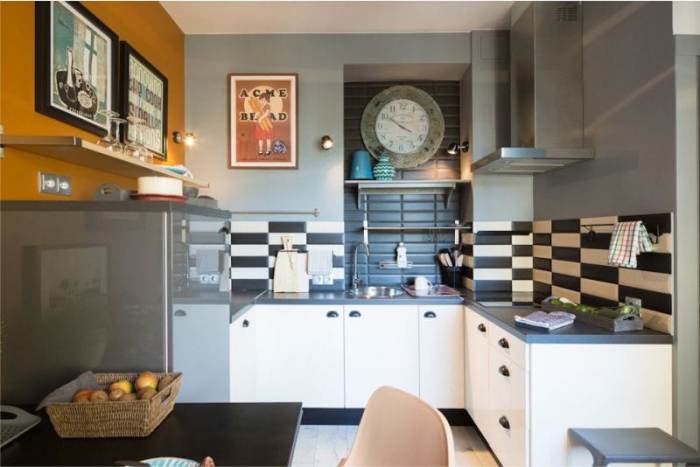
The material for the kitchen apron in the first place should have increased resistance to temperature extremes.
When choosing tiles in the kitchen, you need to pay attention to its classification and type. Glazed tiles with a thin glass coating are excellent for wall coverings.
Important! When choosing such a tile, you must pay attention to the presence of scratches and minor damage on the front side. All damages in the future not only spoil the appearance, but also significantly reduce the life of the product. Unglazed tiles without a topcoat are themselves rough and are usually laid as a flooring.
When buying tiles on a kitchen apron, it is also important to pay attention to chemical resistance. substances, for this there is the following classification:
- AA - resistance to all types of chemical. substances;
- A - sensitive only to chem. substances of strong influence;
- B - unstable to chemical. substances;
- C - poorly resistant to impacts;
- O - completely not resistant to chemical. substances.
Popular color schemes for the kitchen
Unusual and daring color schemes are increasingly gaining popularity. There are a lot of styles for decoration. It is important, when choosing a design for the kitchen, consider what role tiles will play:
- The main color of the kitchen or color accent.
- Plain or color.
- Will there be extra. Inserts from other types.
In light of the latest global trends in kitchen interior design, the following colors are increasingly used as the basis:
- white;
- beige;
- yellow;
- the black;
- blue;
- green;
- Gray.
These colors have gained popularity in their versatility in combining with other tones and shades.
The basis is, beige color is one of the most beautiful and versatile colors, it can become a good base in the design of a kitchen in any style. Beige has a more combination of white furniture and 1000 options - from delicate flesh to light brown shades.
It is important to adhere to the following recommendations when choosing beige shades:
- We always focus on which side the kitchen windows face. Cold shades are suitable for the south, warm shades for the north.
- Remember that warm and light tones increase space, while dark ones will reduce it.
- Be sure to use the color wheel and the basic principles of color combination.
Classic friendly colors for beige
Combination with brown shades
A common combination in which beige is the main one, and chocolate, wood, nut shades of brown complement it. So it will be perfectly combined beige glossy aprons with dairy furniture and walnut curtains or drapes. Or, as an option, you can combine beige furniture, a kitchen apron stylized with wood tiles. Such a solution will give a feeling of connection with nature and add loft elements to your kitchen.
Black color combination
A combination that will look nontrivial and will suit any style. It is not as common as the classic options, such as black and white, beige and brown. Black color in such interiors often acts as an accent, rather than the main color. The solution of a kitchen apron in such colors with a boar tile and a chessboard arrangement will look advantageous.
Combination with white color
It is considered the most aristocratic combination in any design. In kitchens, most often the work area is decorated with colored tile mosaics or still lifes, white appears as the main color for furniture, and walls and floors are finished with beige.
The combination with blue and blue shades
The blue color in this pair will serve as a cooler of warm beige flowers. Also such a combination is ideal for narrow and small kitchens.
Another primary color in kitchen design is white. White kitchen is the best solution due to the following factors:
- On white, minor pollution and dust, stains are invisible. It is not necessary to follow the widespread stereotype that white color will get dirty faster than everyone else, white surfaces have exactly the same amount of ka and other colors.
- It will also visually increase your space.
- Furniture and accessories will look visually lighter.
- Refines cheap materials.
Basic tiles for finishing the kitchen
When finishing a kitchen apron, the following types of tiles are most often used:
- porcelain stoneware;
- glass;
- tiled;
- ceramic;
- stone.
Porcelain tiles in composition are not much different from other types of tiles. Its main characteristics:
- uniform color;
- high strength;
- does not absorb water;
- wear resistance;
- environmental friendliness;
- durability.
Stone tiles are strong and stylish. It allows you to reduce space. Most often used in such a kitchen finish.
- Aprons stylized as stone or brick. This tile is the main component in the style of loft or casual.
- The main worktops.
Glass tile is a popular material used in the styles of High Tech, Modern and Minimalism. It will cost more than everyone else, not only at cost, but also at the cost of work. Kitchen aprons are best finished with small glass mosaics. In addition to mosaic tiles on the apron, you can put a large tile with sprayed patterns on it. In the modern market, more than 10,000 variations are presented. Glass tile with a sprayed pattern can be an excellent accent in the form of a still life or a picture in the kitchen.
Among the advantages of glass tiles are the following:
- Beautiful appearance.
- Stronger and more durable than classical ceramic tiles.
- Glass tile is the only one that is 100% resistant to fading. This is due to the fact that the drawing is applied from the back.
Tiles and ceramics for finishing a kitchen apron fit less than glass or porcelain stoneware. They are inferior in such basic parameters as burnout, strength and durability, but at the same time it is much cheaper than the above options.
Interesting design solutions for kitchen aprons
In 2018-2019, tiles stylized as bricks burst back into fashion. It has various options and sizes, ranging from the small brick we are used to and to rough cobblestones. Most often, "bricks" are used not as the main part of the apron, but as a mosaic frame or as an additional element in the apron.
In addition to brickwork, more and more resort to small types of tiles in the interior. These are various kinds of mosaics in which the size and relief of details can be absolutely anything. Crayon tiles are ideal for accenting certain colors or fragments. Mosaics are sold in different types - finished plates and individual small parts. Tiles are also sold with imitation mosaics.
Common for finishing a kitchen apron there is a "boar" tile. This is a small glazed tile with beveled edges. They give the interior a special volume and texture. Especially in demand in such styles as Scandinavian, Provence, loft, country, industrial. If you take the “boar” tile as the basis for laying the apron, you can create very original compositions. The use of different color textures and tile sizes can help with this.
For styles involving the use of antique things in design, tiles with craquelure glaze, which gives the surface small cracks, are suitable. Other design areas will be harmoniously complemented by a “boar” with a matte finish. It is important to remember when laying a kitchen apron with matte tiles that it is more difficult to remove dirt from it. The combination of cream, beige and gray colors is considered a universal color scheme for an apron made of such tiles.
An apron laid out with a black "boar" in combination with a white or cream kitchen set will also look spectacular. If you make a kitchen in a rustic style, you can use shades of green color combining them with a wooden suite.
Tile "boar" is one of the most versatile in terms of laying due to its size, which can also play into the hands when decorating a kitchen apron.
There are main types of layout of such tiles:
- Horizontal run-up or offset. Details are placed in even rows in the horizontal direction, the rows are shifted relative to the previous one.
- Horizontal without offset. Facing is done in rows of detail to detail.
- Vertically offset - tiles are placed vertically in the vertical direction, rows are shifted relative to the previous one.
- Vertically without displacement - the rows are laid strictly one on one, the tiles are placed vertically. It will be especially interesting to look in combination with contrast grout.
- Diagonal laying - laid at an angle of 45 °. This option is suitable for small kitchens, because it visually expands the space. This way of laying will look better with a grout to match the material.
- At an angle or zigzag, it’s also a “Christmas tree” - the lining is laid at an angle of 45 ° and a very beautiful pattern is obtained. It goes well with grouting any tone.
If the above methods of laying a “boar” seem trivial or simple to you, then you can turn to parquet schemes for laying tiles for ideas on laying tiles. "Boar" is very similar in size to parquet, so there are unlimited options for laying such tiles on a kitchen apron.
So, adhering to the basic rules for choosing tiles according to technical and aesthetic characteristics, you can arrange your dream kitchen apron.
Kitchen apron - with a special approach
